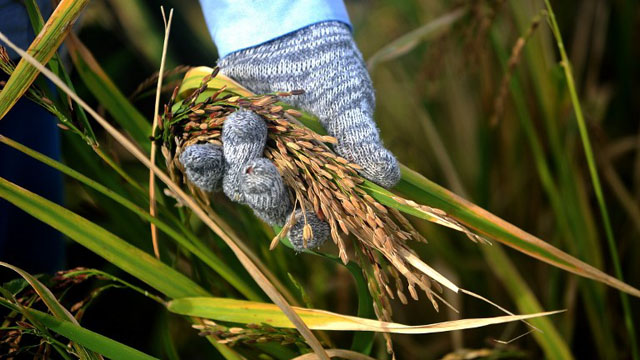SUMMARY
This is AI generated summarization, which may have errors. For context, always refer to the full article.

MANILA, Philippines – The Philippines needs to grow its agriculture sector, which employs majority of the country’s poor, if it wants to meet the Millennium Development Goals (MDGs).
Before agriculture growth can trickle down to the poor however, the sector must sustain a growth of at least 4% for several years, National Economic and Development Authority (NEDA) Director General Arsenio Balisacan told Rappler on Wednesday, January 23.
“In practically all countries, and there’s a good reason for it, the agriculture sector usually grows slower than the rest of the country but if you can manage to grow at 4%, that’s good. If you sustain that over a long period, that’s remarkable,” Balisacan said.
“Which means that for you to grow at that level, you have to increase productivity, the level of productivity. The thing about agriculture is, unlike in services and industry, you cannot import productivity growth. You have to invest in it so you still look at your R&D (research and development) support, rural infrastructure,” he explained.
The country’s MDG performance has not changed much. The Philippines is still far from attaining the goals on poverty and hunger, according to a report released by non-government organization Social Watch Philippines (SWP).
There are 8 MDGs, and the first one calls for a reduction in poverty and hunger by half.
The Philippines committed in 2000 to meet the MDGs by 2015, but the country is unlikely to do this, said Balisacan.
Agriculture investments
Leonor Magtolis-Briones, SWP Lead Convenor and former National Treasurer, said investing in the agriculture sector is one of the best strategies to lift the rural poor out of poverty.
Briones said however investments cannot be “Luzon-biased.”
She said many of the agricultural areas in the country are in Visayas and Mindanao, but little funds and projects like public-private partnerships are directed at these places.
“What I mean is, the strongest sector we have now is the services sector. The services sector needs certain level of skills – banks, BPOs, financial transactions, those are the biggest sources of growth. But high unemployment rates and number of unskilled, semi-skilled are in Visayas and Mindanao, geographically. Those are the areas where poverty and hunger are prevalent,” Briones said.
“But the focus of the national budget is in Luzon, the focus of PPPs is also here in Luzon so there really is a mismatch,” she added.
This approach is more holistic than the Conditional Cash Transfer, which she said is exclusive to poor Filipinos who are younger and have children.
Agriculture sector growth has been below 4% in the past few years. In 2011 and 2012, the sector grew 2.59% and 2.92%, respectively.
MDG prospects
Balisacan admitted the Philippines would not be able to meet all 8 MDGs, especially with “alarming” trends of poverty incidence, maternal mortality and HIV prevalence. The SWP report showed the ranks of the poor, rate of maternal deaths and number of HIV cases in the country significantly increased.
SWP cited government data that showed poverty incidence increased to 26.5% in 2009 from 26.4% in 2006, while the country’s maternal mortality ratio (MMR) per 100,000 live births surged to 221, more than twice the 97 recorded in 2011 and 95 in 2010.
The Department of Health recently disclosed the number of new HIV cases reached 316 as of September last year. This was a 25% increase from the 253 cases recorded in September 2011.
However, Balisacan said with the passage of the Reproductive Health Law, he is confident the country will be able to catch up and prevent further increase in HIV cases.
“I think if we can implement RH aggressively, we can catch up. Maternal mortality is also [caused by] poor access to reproductive healthcare. And there is a big budget for reproductive health services and you get this new money from sin taxes. We should have no reason not to be able to catch up, particularly on the health MDGs,” Balisacan said.
The 8 MDGs aim to:
- End poverty and hunger
- Achieve universal primary education
- Achieve gender equality
- Reduce child mortality
- Improve maternal health
- Combat HIV/AIDS and other communicable diseases such as TB, malaria
- Attain environmental sustainability
- Develop global partnerships
– Rappler.com
Add a comment
How does this make you feel?
There are no comments yet. Add your comment to start the conversation.